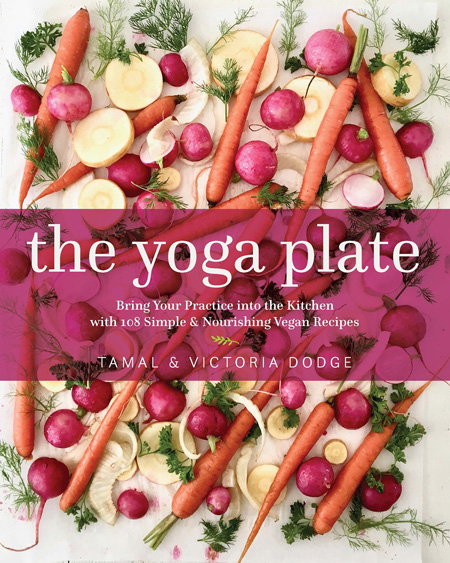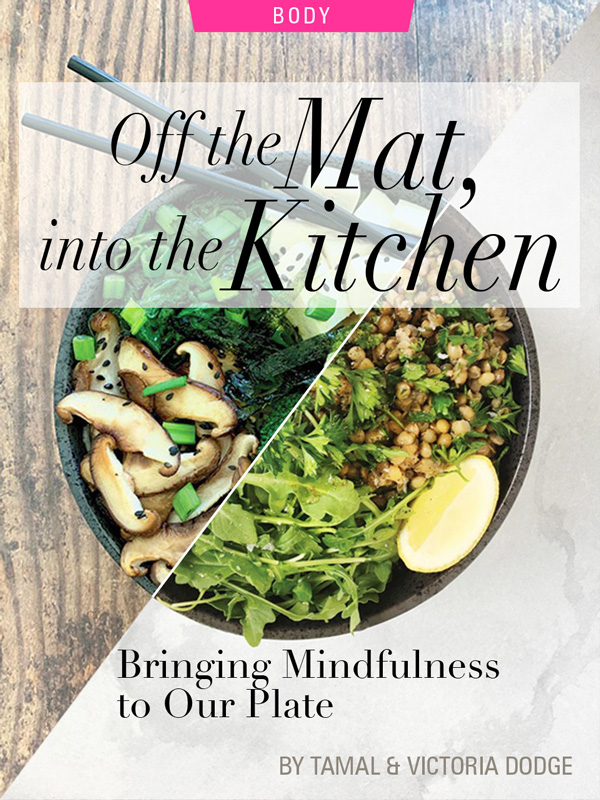
Renowned yoga teachers connect their yogic philosophy to their plates, creating simplicity, ceremony and holistic health (plus 2 yummy recipes!)
_
Yoga teaches us to examine and question life, to search our hearts and minds regularly, and to use our intellect for spiritual study and growth. And what better place to start than with the food we eat? The information and advertisements we regularly take in do not necessarily put the planet and spiritual wellbeing at the forefront. They don’t share the back story. They don’t connect the dots. It falls on us as individuals to look into these subjects and create change. We have all heard the old adage, “Change starts with one.” Our actions can create a ripple effect and eventually lead us to building a spiritual culture.
All of the recipes in The Yoga Plate have been designed according to the concept of ahimsa, or non-harm, which is part of the first limb of the Eight Limb Path. With ahimsa in mind, we try to cause the least harm possible to all living creatures. This is an extremely important part of yogic philosophy when it comes to eating.
After all, the way most of us cause harm throughout our lives, consciously or not — is by way of what we put in our mouths. Conversely, infusing that consciousness can bring forth radical healing.
Another precept included in the Eight Limb Path is dhyana, which translates to ‘devotion’ or ‘meditation’. In the yogic context, meditation means much more than just sitting in silence or chanting for a set amount of time. It refers to actually living our lives in a more spiritually conscious manner. The manner in which we eat offers a great avenue for infusing more mindfulness into our daily routine.
We know how challenging it can be to cook something that nourishes the body, heals the mind, and fills the soul as well. So we have taken into consideration our busy lifestyles and the fact that many of us live in an urban landscape. When things are chaotic around us, it is refreshing to mindfully (but often quickly) make foods that will satisfy and energize.
Our evening meal should be something that we look forward to at the end of the day. We believe it should be filling, scrumptious, and nutritious. The following two recipes can cultivate the mood of reflection and relaxation to help wind down and release the day — in a way that restores one body, mind and spirit. Bon Appetit to your Best Self!
The Monk Bowl
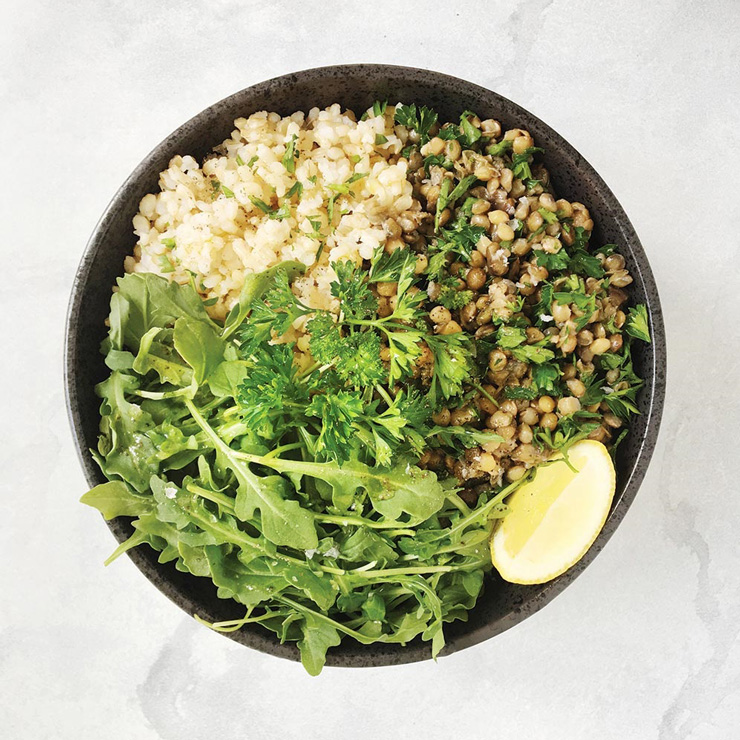
SERVES 4
In our house we have a running joke that Victoria could live off of salad, brown rice, and lentils. We call her diet ‘monk food’ because she is so simple in her food habits and she loves to eat clean, basic meals. This recipe is one of Victoria’s all-time favorites, as it is simple and very satisfying. We play with many variations on cooking lentils in our house because we love the way lentils make our bodies feel. The Monk Bowl is super high in protein, fiber, and minerals that boost your energy and fuel your body as well as being easy to digest.
Ingredients:
- 2 cups dry lentils
- 6 cups water
- ¼ cup olive oil
- ½ tsp. paprika
- ½ tsp. finely chopped garlic
- 1 tsp. cumin
- ¼ cup finely chopped parsley
- ½ Tbsp. finely chopped chives
- 1¼ tsp. Himalayan pink salt
Directions:
- Rinse the lentils and pick out any stones. Place them in a large pot with the water. Bring to a boil, then turn the heat down to low and cover. Let the lentils simmer for 20 minutes, or until fully cooked.
- Drain the lentils in a strainer and give them a light rinse with fresh water. Set them aside.
- To make the marinade, place the rest of the ingredients in bowl and mix together well.
- Pour the marinade over the cooked lentils and stir well. Serve over brown rice.
The best sauce for the Monk Bowl is the Magic Tahini Sauce [SEE BELOW], as it’s slightly bitter, sour taste complements the hearty flavor of the lentils and rice.
Miso Ramen Bowl
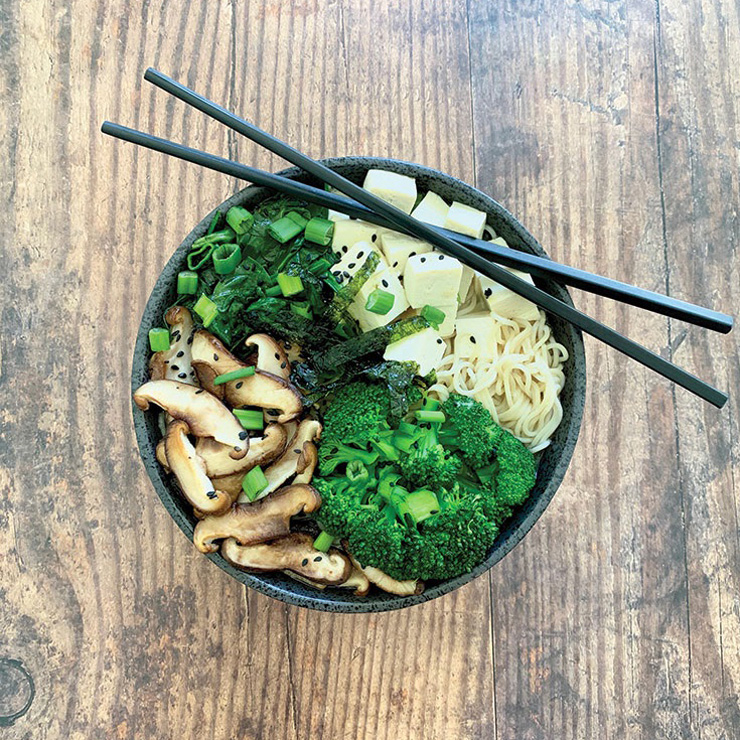
SERVES 4
Ramen is the archetypal Japanese street food. And miso is the healing, nutritious soup that has been used in the East, just like chicken noodle soup has been used in the West, to cure all ills, from colds to a lowered immune system. This recipe merges the two to form a powerful, well-balanced meal that dances on the tongue and fulfills our nutritional needs. While the recipe gives specific timing directions for adding the ingredients, you don’t have to feel rushed when making this. Play around with the timing. Test the noodles as they boil; if they are slightly tender but not fully cooked, you know you have some time left and can add in the veggies.
Ingredients:
- 3 Tbsp. miso paste
- 1 Tbsp. soy sauce
- 1 tsp. sesame oil
- 2 Tbsp. plus 4 cups water
- 2 packs ramen noodles
- 1 cup broccoli, cut into small pieces
- 1 cup chopped shiitake mushrooms
- 1 cup spinach
- 1 cup chopped firm tofu
- ¼ cup minced scallions
- ½ cup nori (seaweed) strips, cut with scissors
- Black sesame seeds (garnish)
Directions:
- Mix miso, soy sauce, rice vinegar, sesame oil, and 2 Tbsp. water in a small bowl and set aside.
- Boil 4 cups of water and add ramen noodles, stirring occasionally.
- Two minutes before the noodles are done, add broccoli and stir.
- One minute before the noodles are done, add the shiitake mushrooms, spinach, tofu, scallions, and seaweed strips. Stir, then turn off heat.
- Add the miso mixture and mix well. Pour into bowls, garnish with black sesame seeds, and serve right away
Magic Tahini Sauce
MAKES ABOUT 1½ CUPS
This creamy tahini sauce is one of the staples in our house. It’s very versatile. We use it on just about anything, from fresh salads and Mediterranean dishes to rice bowls and more. There is no need to feel guilty when devouring this rich, nutrient-dense sauce. It’s loaded with lots of B vitamins, vitamins E and K, and minerals like calcium, phosphorus, magnesium, and potassium.
Ingredients:
- ½ cup tahini
- ½ cup water
- ¼ cup lemon juice
- 2 Tbsp. extra-virgin olive oil
- ¾ tsp. Himalayan pink salt
- ¼ tsp. minced garlic
- 1 Tbsp. minced fresh basil
Directions:
Place all ingredients in a high-powered blender and blitz for 45–60 seconds.
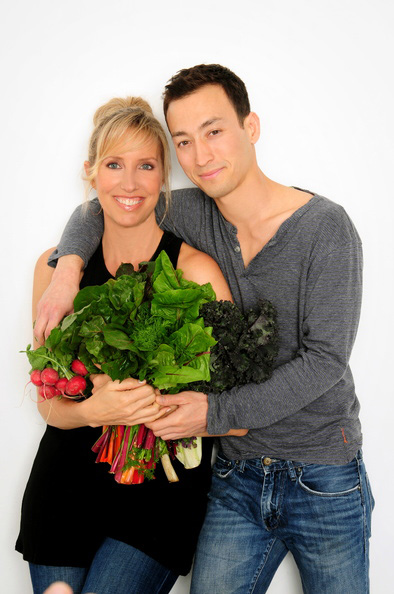
[Recipes adapted from THE YOGA PLATE: Bring Your Practice into the Kitchen with 108 Simple & Nourishing Vegan Recipes, by Tamal and Victoria Dodge. Sounds True, September 2019. Reprinted with permission.]
You may also enjoy reading Ketotarian: A Refreshing Take on the Keto Diet with a (Mostly) Plant-Based Twist, by Dr. Will Cole
